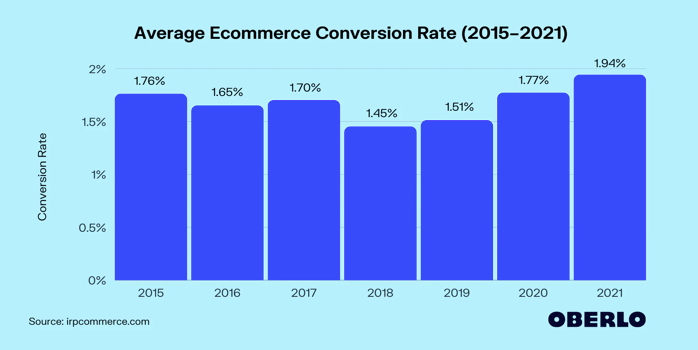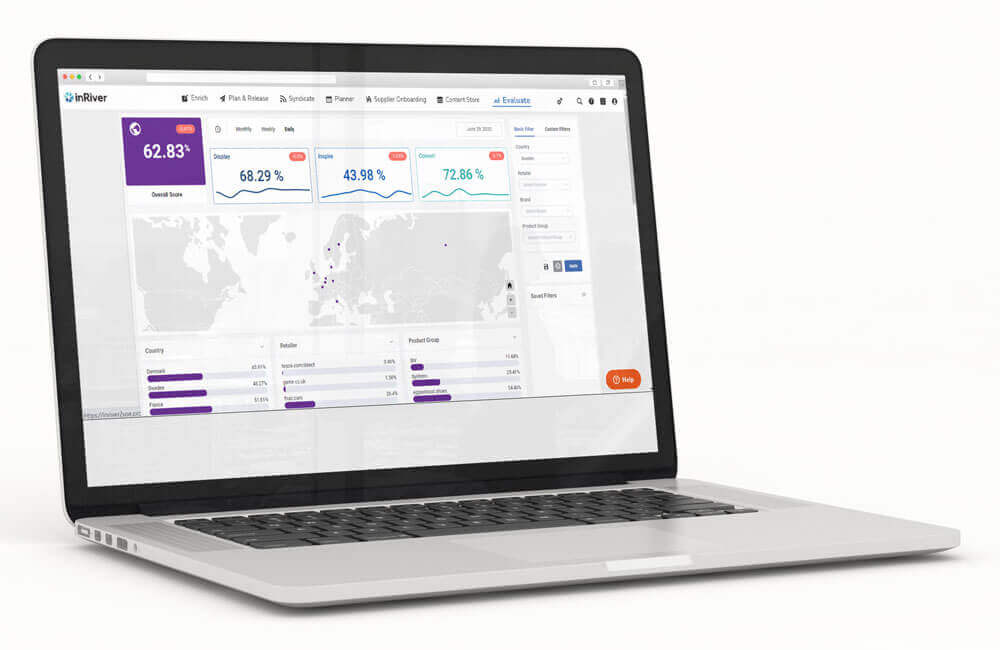Three universal truths for growing your e-commerce sales in 2021
May 19, 2021The digital shelf is more important than ever- optimize it now.
Retail e-commerce sales around the world reached 4.28 trillion US dollars (according to Statista) and sales are projected to grow to 5.4 trillion US dollars in 2022. During the COVID-19 pandemic, buyers worldwide relied on the internet for purchases large and small, increasing competition for businesses everywhere. That shift in buying behavior is not expected to change. To meet new buyer expectations, retailers and manufacturers alike are turning to technologies including artificial intelligence (AI), digital shelf analytics (DSA), and automation to deliver better online shopping experiences to increase conversion rates and grow sales. Using PIM for retail is also a growing trend.
But what’s the best way to do that?
While there are many factors at play, improving the buying experience is a clear first step. Unfortunately, many brand manufacturers face challenges when it comes to tracking down lost sales opportunities and discovering the underlying cause of cart abandonment. Conversion rates are everything today. To find, fix, and prevent lost sales, you need to identify the cause of the lost sale, solve the problem, and monitor it so that it doesn’t impact those revenue moments again. It’s the engagement intelligence applied across channels that will make a difference for brands today.
Here are three universal truths to grow revenue and improve conversions today:
A product that can’t be seen can’t be sold
If consumers can’t find a product — on the shelf in a store, in search results, or on the digital shelf, online, they can’t buy it. In a physical store, it’s usually possible to ask an employee whether they have it in the back or in a warehouse, but online, you might not have many options. If a product doesn’t show up in search results or anywhere on the website, it will not and cannot be sold. How can consumers buy something online that they can’t find, see, click on, and purchase? They can’t.
Many retailers struggle with getting their products found and seen on the
- SKUs, the alphanumeric identification that identifies product characteristics, are unique identifiers specific to each store or business, and help track inventory and sales. Frequently, SKUs disappear from the digital shelves of online retailers, making your products no longer findable.
- URL links don’t work — either they’re mistyped, go to the wrong product, or simply don’t come up in search results. However it happens, non-working URLs mean your products aren’t going to show up.
Problems with SKUs and URLs can come up very quickly, where they worked one day and not the next. If you’re not aware that your SKUs and URLs aren’t working, shoppers are going to be disappointed. More importantly, they won’t be able to buy from you.
An unknown or untrusted product won’t be sold
Buyers want to feel confident in the products they buy, especially online. Most shoppers regularly purchase the same products week after week, month after month, and year after year because they know and trust those products. Because consumers know what to expect and trust that brand, they continue to be regular customers.
Online, however, it’s very easy to lose customer trust when you don’t provide the information consumers are looking for. Consumers have increased expectations for what they find on the digital shelf. Online, because consumers can’t touch and see the item, they have to trust the retailer to deliver helpful and complete information so they can make an informed decision. They expect better (and more comprehensive) product descriptions, clearer images, different views of the product, and detailed information about how, where, and why to use it.
Otherwise, everything looks and feels the same and they may not buy.

Consumers al
A product that can’t be supplied can’t be sold
The pandemic led to issues with the supply chain for retailers and as a result, products were often out of stock. And, when items are stockouts, it costs businesses a lot of money. Last year some of the shortages were inevitable — after all, it was a year filled with unprecedented events. But now, we don’t want to wait and the patience for stockouts has worn thin.
In digital commerce, impatience kicks in after just a few seconds. Only 1.94% of website visits result in a purchase. So when retailers can’t supply the products buyers are looking for, consumers are going to go somewhere else. If the product a consumer is searching for is out of stock on one website, they’ll look at another one, or they’ll look at a competing product. So much for customer loyalty! Online shopping makes it easy to find and buy something else. Frequently, out-of-stock items cause consumers to switch brands permanently, because they discovered that the “replacement” product suits them better. When you can’t keep a product in stock, you certainly can’t sell it.

Growing e-commerce sales in 2021

E-commerce sales present enormous possibilities — an increasingly global market, new marketplaces to sell your products, and a 24×7 shopping opportunity that’s nearly impossible to reproduce in real life. The key to meeting the competition head on is by ensuring that wherever consumers are shopping, in front of a computer or using a cell phone, that they can find the products they need, and the information they want to make informed decisions. Standing out from the competition requires you to have a process in place to constantly monitor product information to keep pace with the ever-changing digital shelf.
Integrating digital shelf analytics into product information management, you can make sure that your products can be seen, trusted, and available. Inriver Evaluate does just that.
This comprehensive solution helps empower you to increase revenues, improve conversion rates, and optimize the buying journey with data-driven insights about your product information’s performance, wherever it’s being sold. It takes more than just great products to succeed in e-commerce today. It’s a tightly woven web of technology, data, and insights that provide solutions to win on the digital shelf.
Want to learn how digital shelf analytics plus PIM help solve e-commerce challenges? Watch Digging into Digital Commerce Insight to Drive Revenue from the Festival of Marketing to learn more.
author
Dave Copeland
Director of Sales Engineering
Dave has worked in the software industry for the past 20 years and within e-commerce for the past five, focused on solving the biggest issues facing brands selling on the digital shelf today. With a passion for solving problems, Dave believes that with the right technology, process and people, brands have an amazing opportunity in front of them.
read more